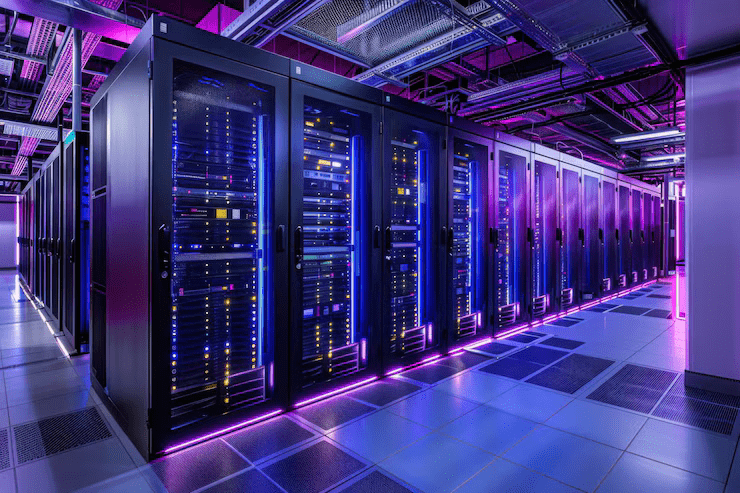Your IT infrastructure includes all of your hardware, software, servers, databases, applications, network devices, systems, and any other device used in your organization. It’s imperative for modern businesses that all of their IT infrastructure is secure, runs smoothly, and at minimal cost.
It naturally follows that infrastructure monitoring is one of the most critical functions of any IT department. They must continuously track, analyze, and manage every facet of the infrastructure to identify and resolve issues before they impact operations. This article provides a comprehensive guide on the different types of infrastructure monitoring, their key components, and industry best practices that guarantee success.
Data Collection
All quick fixes begin with a diagnosis. To recognize a problem, you must cast a wide data collection net that helps create a detailed image of your infrastructure’s health.
Infrastructure Monitoring Performance Metrics:
- Server-side metrics include macro-features like memory usage across organization servers, network traffic and speed, input/output processes from hard disks, and CPU utilization.
- Application-level monitoring uses a range of software tools and telemetry data to record response times, error rates, and throughput for consistent service quality and ensure a smooth user experience for the end customer.
- Database monitoring tracks database changes to identify potential impacts. Additionally, availability is monitored through automatic tools that check if all servers are online at regular intervals.
Event Logs:
- System logs include Kernel Logs (they record system-level events like kernel boot-up, system errors, hardware failures, and security breaches) and Security Logs (to track failed login attempts, unauthorized access, and security policy violations).
- Application monitoring includes error logs that record error messages and stack traces for debugging, as well as debug logs that contain detailed information about an application for coders.
- Access logs monitor access to the application and the users (IP addresses, timestamps, and activity).
Network Traffic:
- Packet captures inspect protocol headers, payload data, and timestamps as network packets move across a network. This data is essential for troubleshooting, security, and network performance.
- Flow data looks at clusters of network packets as opposed to singular instances of network traversion. It looks at the source and destination of each IP address on the network, port numbers, protocols, and the total bytes transferred in each instance. While the data is less detailed compared to packet captures, it allows for a macro-view of network traffic.
- NetFlow is a standardized way to export flow records and analyze them to understand network behavior. It’s useful for monitoring network performance, security threats, and troubleshooting.
Data Analysis
Once you’ve gathered all the necessary data, you must understand and analyze it. The industry has made major progress towards automating certain processes and installing detection systems that greatly decrease the margin for error.
Threshold-Based Alerts
You can think of threshold-based alerts like tripwires for your IT infrastructure. They’re essential for proactive management because they warn you of all potential issues. You can pick a performance indicator to automatically trigger alerts when you deviate from the acceptable range. This real-time infrastructure monitoring technique can be broken down into:
- Static Thresholds:
Like the name suggests, static thresholds operate on pre-set, fixed values. For example, you may want to keep all of your CPUs under 85% capacity to maximize performance. If any of your systems go above that threshold, the system alerts you. These are pretty simple to set up, but have some glaring limitations. It may be normal for your CPU to operate at 85% during working hours, but it won’t recognize an issue with the same CPU operating at 85% during off-hours.
- Dynamic Thresholds:
Any threshold-based plan will include both static and dynamic thresholds (which adapt to changing conditions). This is a much more advanced technology that uses AI and machine learning algorithms to analyze historical data and establish a baseline for system behavior.
The thresholds automatically adjust themselves based on the time, day of the week, or recent increase/decrease in activity. For example, you can set a threshold of 25% for disk space during working hours, but you can increase this threshold to 35% for peak usage. A combination of static and dynamic thresholds helps minimize false alarms and ensure monitoring accuracy.
Anomaly Detection:
- Statistics
Your best at catching anomalies in large data sets is a robust statistical analysis. You need to monitor historical data to establish a baseline, and then use standard deviation and z-scores to identify data points that deviate from the baseline.
- Machine Learning
All software worth its weight in bytes uses machine learning now, and infrastructure monitoring isn’t any different. You can train algorithms with historical data to recognize patterns and anomalies. It sounds similar to the statistical methods mentioned above because it is, but machine learning is much better at catching subtle anomalies that statistics will generally miss.
Correlation Analysis
- Event Correlation
Identifying singular anomalies definitely has value, but it fails to provide a complete picture. Focusing on singular data points blinds you to potentially larger issues, and you can get stuck treating symptoms rather than the underlying issue. Event correlation analyses multiple events simultaneously to recognize patterns, like spikes in error logs, increased network traffic, or fluctuations in system performance. For instance, a spike in database queries can indicate a decrease in database performance.
- Time-Series Analysis
A time-series analysis analyzes data over time to identify trends, seasonality, and cyclical patterns. This is instrumental for predictive analysis. For instance, historical data on server load and peak usage times informs your decision on potential increases in capacity.
Alerts and Notifications
Now that you know how to collect and analyze data, you need to set up alert systems that help you react to system failures and minimize downtime. An infrastructure monitoring solution is practically useless without:
Real-time alerts are the bread and butter of infrastructure monitoring. They include
- Email notifications for relevant teams
- SMS notifications to on-call personnel.
- Push notifications
- Automated voice calls
Tiered Escalation: It’s impossible to create an alert system that gets each notification to the right team with 100% accuracy. There are limitations to their understanding of the potential solutions, so you must set up escalation procedures that alert higher-level teams in each department. They ensure the issue falls in front of the right person and is resolved quickly.
Visualization and Reporting
Infrastructure monitoring generally results in thousands, if not hundreds of thousands, of data points that would be impossible to understand in their raw form. You need a way to visualize and present this data in a form employees and management can digest. Luckily, most monitoring tools have built-in visualization and reporting tools, including:
Dashboards
- Real-time dashboards display statistical data, system status, progress of tickets and complaints, and other live information in a consolidated platform.
- Displaying current system status and performance metrics.
- Historical trend dashboards: showing long-term trends and patterns.
- Customizable dashboards: Allowing users to create personalized dashboards.
Custom Reports:
- Capacity planning reports: analyzing historical data to predict future resource needs.
- Security compliance reports: Assessing compliance with security standards and regulations.
- Performance reports: identifying performance bottlenecks and optimization opportunities.
By effectively utilizing these components, organizations can achieve robust infrastructure monitoring, enabling them to proactively address issues, optimize performance, and ensure business continuity.
Infrastructure Monitoring Tools and Solutions
It goes without saying you can’t manually monitor your entire IT infrastructure. Thankfully, there are a variety of tools on the market with different specialties. You can pick the one that suits your needs best.
- Open source monitoring tools: Nagios and Zabbix
- Cloud-based Monitoring: Datadog and New Relic
- Enterprise monitoring: IBM Tivoli Monitoring and SolarWinds
Best Practices for Infrastructure Monitoring
IT infrastructure monitoring has been around for quite some years now. The field has made considerable advancements, and experts have realized best practices that boost overall performance. The following best practices will help you establish a robust risk monitoring system.
- Troubleshoot to identify problematic areas and clearly define the goals of your monitoring strategy.
- Identify the most critical areas in your infrastructure and prioritize them in your strategy.
- Establish baselines for all of your systems before implementing the monitoring strategy.
- Set up a robust and comprehensive notification system to record all anomalies and communicate the data to relevant personnel.
- Use as much data analytics as you can to get to the root cause of anomalies.
- Automate alerts and threshold monitoring for maximum efficiency.
- Schedule regular reviews of both your IT infrastructure and your monitoring strategy for optimization.
It doesn’t matter if you’re a budding startup, a growing company, or a multinational corporation. You’ll need to integrate IT systems into a majority of your business processes, and you’ll need to ensure those systems run smoothly for maximum operational efficiency. The information above should set you on the track towards realizing the full potential of your business.







